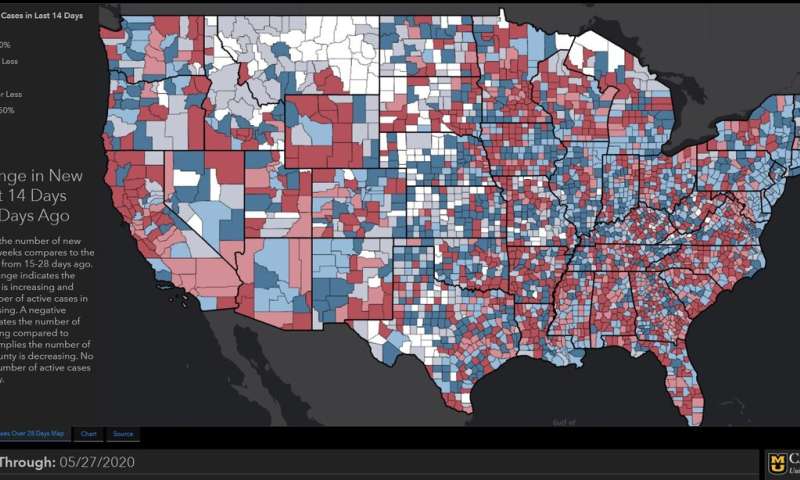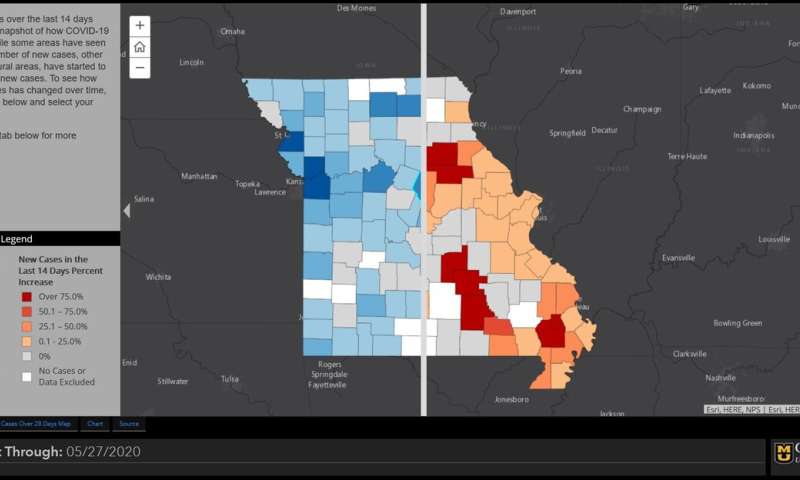
A new tracking tool developed at the University of Missouri provides a continuously updated 14-day snapshot of new cases of COVID-19 in every county in the nation, helping the public monitor trends in cases as local stay-at-home restrictions are lifted and other measures are gradually repealed.
The national and Missouri dashboard versions were developed by MU Extension’s Center for Applied Research and Engagement Systems (CARES). The maps and data show changes in the number of cases by county. The tool also provides a longer view of the impact of containment measures—or lack thereof—showing new cases within the current 14-day period compared to the number of new cases in the prior 15 to 28 days. Separate charts by county graphically show often dramatic trends that go back as far as the oldest case in each county.
“As many communities are starting to reopen, it’s important for leaders and the general public to be aware of the trends happening in their communities,” said CARES research project analyst and tracker designer Justin Krohn. “Our hope is that these dashboards provide additional context to people as they make decisions about resuming pre-COVID activities.”

While the understanding of COVID-19 is still changing, the 14-day period is relevant because that is the typical incubation period when a person is contagious and can infect others. In addition, many states, including Missouri, say that 14 days is the period over which communities need to have a downward trajectory of documented COVID-19 cases before lifting stay-at-home orders—orders that many jurisdictions are not able to enforce, said Kathleen Quinn, associate dean for rural health in the MU School of Medicine and MU Extension senior program director for health and safety.
The tools do not supplant official national and Missouri Department of Health and Senior Services databases. Rather, “the information provides estimates to help assess trends within counties, inform public health actions and policies, and identify areas most impacted,” said Chiquita Chanay, health strategy coordinator for Community Health Engagement and Outreach in the MU College of Human Environmental Sciences. Even as the rate of new cases is slowing in some places, the rate in other areas—especially rural areas—is increasing.
The data can help illustrate the importance of helping to control the spread of the virus by maintaining simple measures like 6-foot social distancing and wearing masks, Quinn said. “This is just one snapshot, but hopefully it will help to influence behavior.”
Source: Read Full Article
